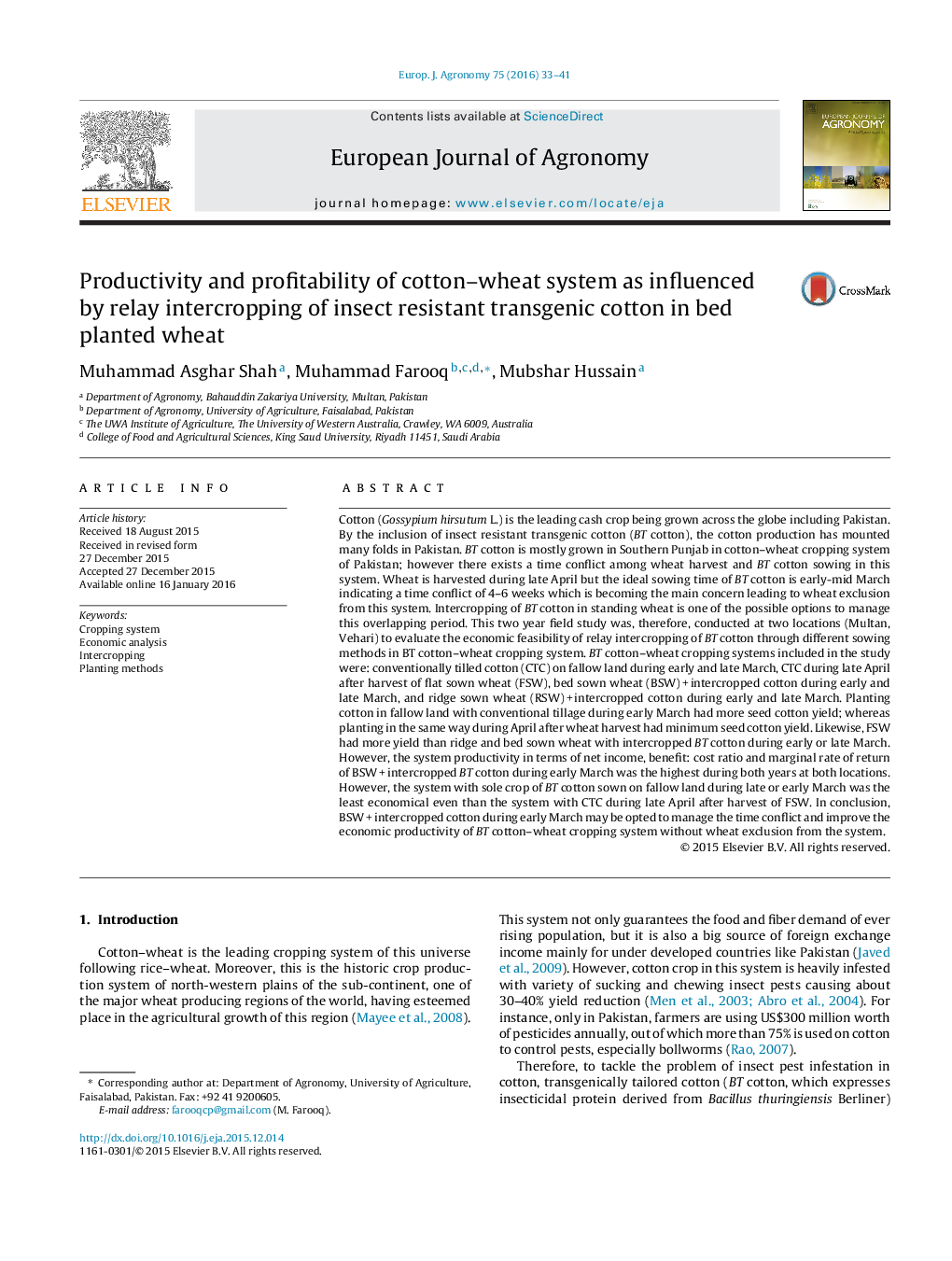| کد مقاله | کد نشریه | سال انتشار | مقاله انگلیسی | نسخه تمام متن |
|---|---|---|---|---|
| 4508686 | 1624450 | 2016 | 9 صفحه PDF | دانلود رایگان |
• There exists time conflict between sowing of BT cotton and wheat harvest.
• Planting cotton after fallow with tillage during early March had more seed cotton yield.
• Flat sown wheat had more yield than ridge and bed sown wheat with intercropped BT cotton.
• Having sole crop of BT cotton sown on fallow land during late or early March was the least economical.
• System productivity of bed sown wheat + intercropped BT cotton during early March was the maximum.
Cotton (Gossypium hirsutum L.) is the leading cash crop being grown across the globe including Pakistan. By the inclusion of insect resistant transgenic cotton (BT cotton), the cotton production has mounted many folds in Pakistan. BT cotton is mostly grown in Southern Punjab in cotton–wheat cropping system of Pakistan; however there exists a time conflict among wheat harvest and BT cotton sowing in this system. Wheat is harvested during late April but the ideal sowing time of BT cotton is early-mid March indicating a time conflict of 4–6 weeks which is becoming the main concern leading to wheat exclusion from this system. Intercropping of BT cotton in standing wheat is one of the possible options to manage this overlapping period. This two year field study was, therefore, conducted at two locations (Multan, Vehari) to evaluate the economic feasibility of relay intercropping of BT cotton through different sowing methods in BT cotton–wheat cropping system. BT cotton–wheat cropping systems included in the study were: conventionally tilled cotton (CTC) on fallow land during early and late March, CTC during late April after harvest of flat sown wheat (FSW), bed sown wheat (BSW) + intercropped cotton during early and late March, and ridge sown wheat (RSW) + intercropped cotton during early and late March. Planting cotton in fallow land with conventional tillage during early March had more seed cotton yield; whereas planting in the same way during April after wheat harvest had minimum seed cotton yield. Likewise, FSW had more yield than ridge and bed sown wheat with intercropped BT cotton during early or late March. However, the system productivity in terms of net income, benefit: cost ratio and marginal rate of return of BSW + intercropped BT cotton during early March was the highest during both years at both locations. However, the system with sole crop of BT cotton sown on fallow land during late or early March was the least economical even than the system with CTC during late April after harvest of FSW. In conclusion, BSW + intercropped cotton during early March may be opted to manage the time conflict and improve the economic productivity of BT cotton–wheat cropping system without wheat exclusion from the system.
Journal: European Journal of Agronomy - Volume 75, April 2016, Pages 33–41
